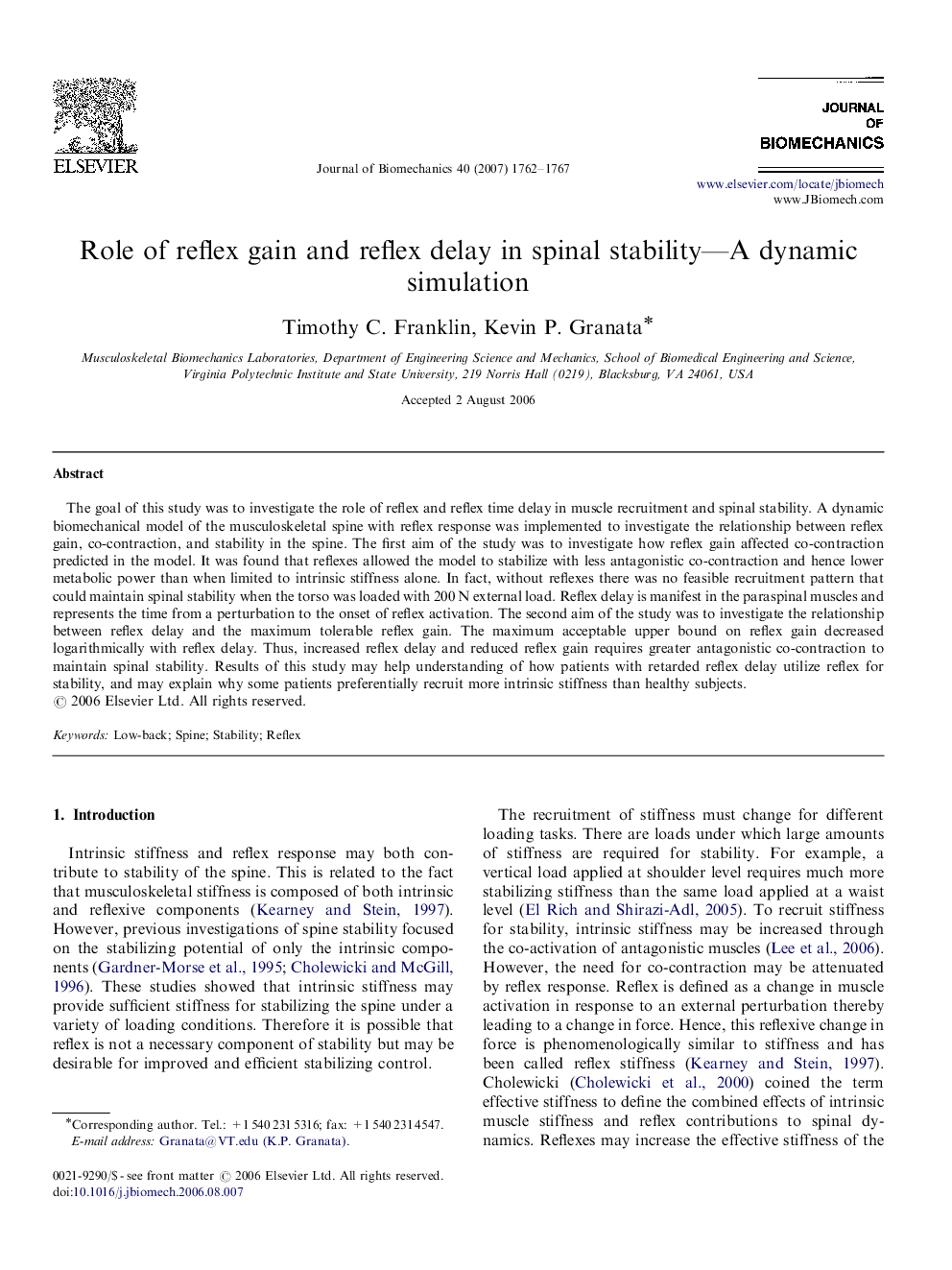| کد مقاله | کد نشریه | سال انتشار | مقاله انگلیسی | نسخه تمام متن |
|---|---|---|---|---|
| 874372 | 910335 | 2007 | 6 صفحه PDF | دانلود رایگان |

The goal of this study was to investigate the role of reflex and reflex time delay in muscle recruitment and spinal stability. A dynamic biomechanical model of the musculoskeletal spine with reflex response was implemented to investigate the relationship between reflex gain, co-contraction, and stability in the spine. The first aim of the study was to investigate how reflex gain affected co-contraction predicted in the model. It was found that reflexes allowed the model to stabilize with less antagonistic co-contraction and hence lower metabolic power than when limited to intrinsic stiffness alone. In fact, without reflexes there was no feasible recruitment pattern that could maintain spinal stability when the torso was loaded with 200 N external load. Reflex delay is manifest in the paraspinal muscles and represents the time from a perturbation to the onset of reflex activation. The second aim of the study was to investigate the relationship between reflex delay and the maximum tolerable reflex gain. The maximum acceptable upper bound on reflex gain decreased logarithmically with reflex delay. Thus, increased reflex delay and reduced reflex gain requires greater antagonistic co-contraction to maintain spinal stability. Results of this study may help understanding of how patients with retarded reflex delay utilize reflex for stability, and may explain why some patients preferentially recruit more intrinsic stiffness than healthy subjects.
Journal: Journal of Biomechanics - Volume 40, Issue 8, 2007, Pages 1762–1767